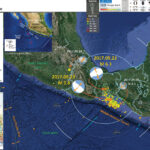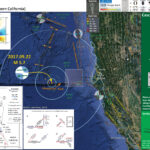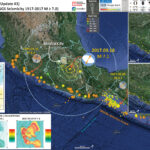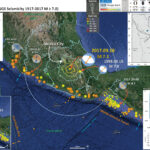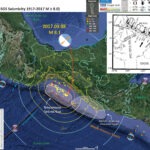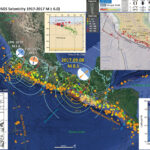Well, we had a really interesting earthquake today. There was a M 6.1 earthquake in the North America plate (NAP) to the north of the sequence offshore of Chiapas, with the M 8.1 mainshock. Here is the USGS website for…
Earthquake Report: Mendocino fault! (northern California)
I was driving around Eureka today, running to the appliance center to get an appliance (heheh). I got a message from a long time held friend (who lives in Salinas, CA). They asked me if I was OK, given that…
Earthquake Report: Puebla, Mexico Update #1
Well, the responses of people who are in the midst of a deadly disaster have been inspiring, bringing tears to my eyes often. Watching people searching and helping find survivors. This deadly earthquake brings pause to all who are paying…
Earthquake Report: Puebla, Mexico
Earlier today there was a large earthquake associated in some way with the subduction zone forming the Middle America Trench. There is currently some debate about what plate this earthquake occurred within, but it appears to be an intraplate earthquake…
Earthquake Report: Chiapas, Mexico Update #1
Well, after about 4 hours sleep, my business partner woke me up to talk about the fire alarms we were installing in a rental (#safetyfirst). Now that I have had some breakfast, I here provide some additional observations that people…
Earthquake Report: Chiapas, Mexico
While I was spending time with my friend Steve Tillinghast (he is getting married on Saturday), there was a Great Earthquake offshore of Chiapas, Mexico. This is one of four M 8 or greater earthquakes ever recorded along the subduction…
Earthquake Report: Bear Lake fault, Idaho
We are still having a series of earthquakes in southeastern Idaho. This earthquake appears related to the Bear Valley fault (BVF) system, which is a normal fault system related to extension in the Basin and Range geomorphic province. Here is…

